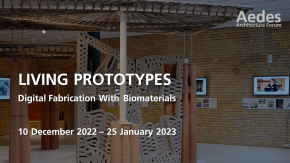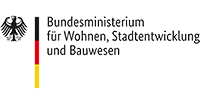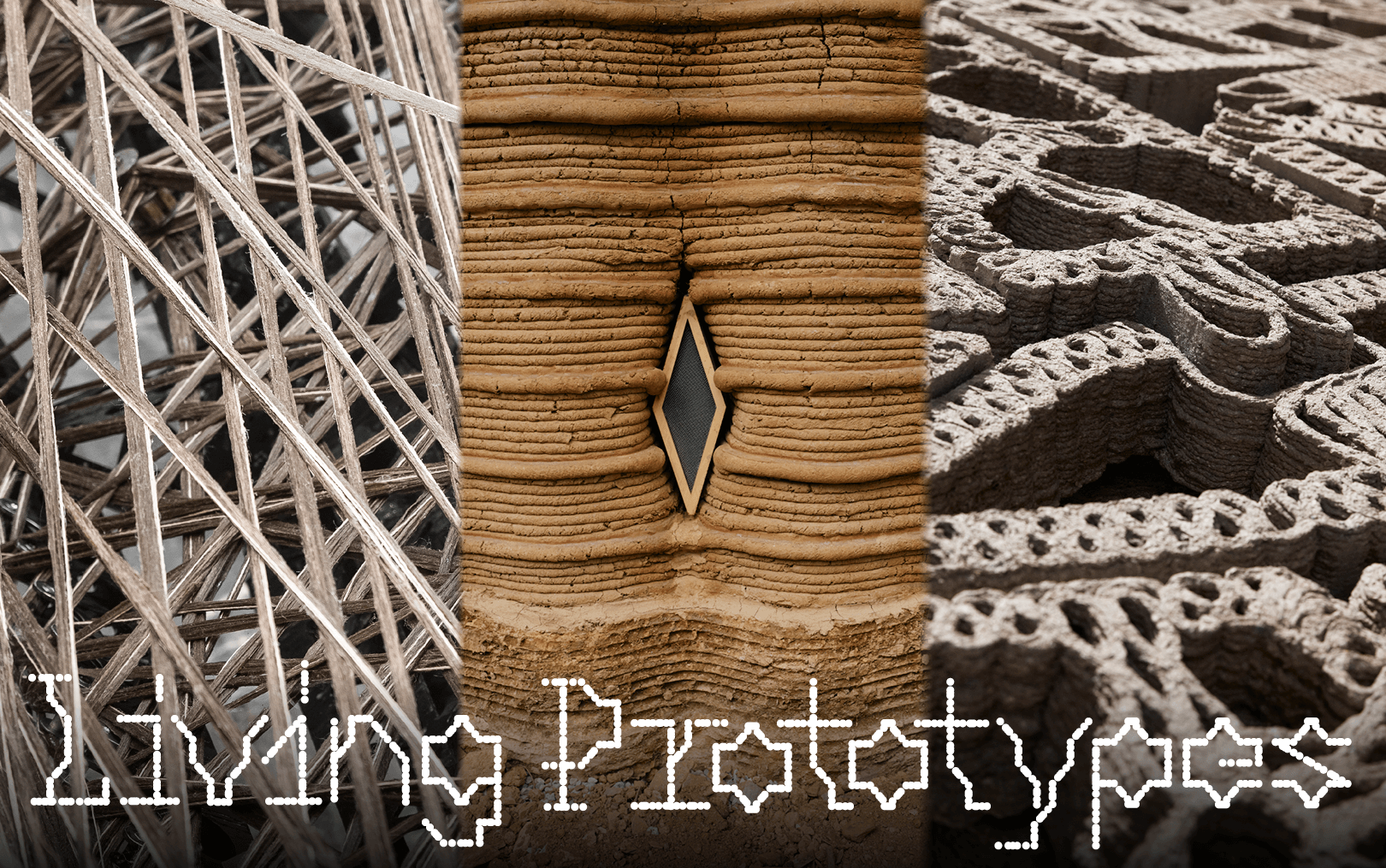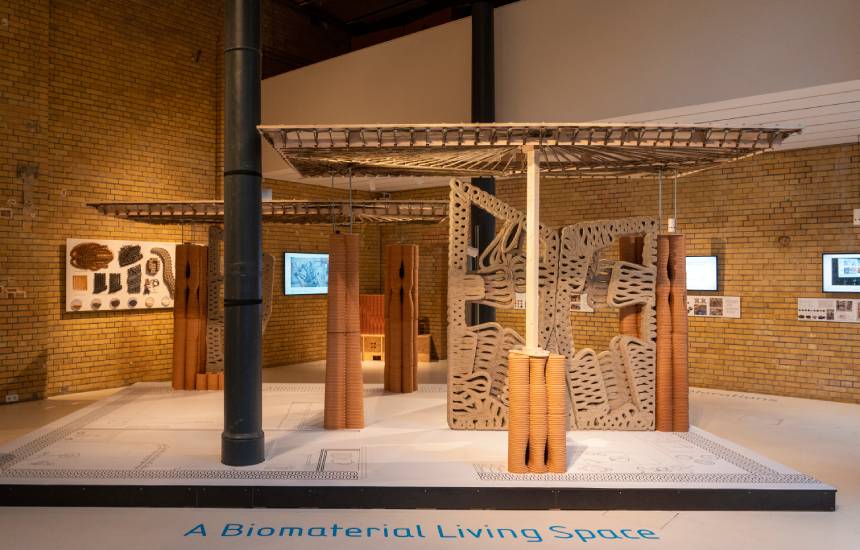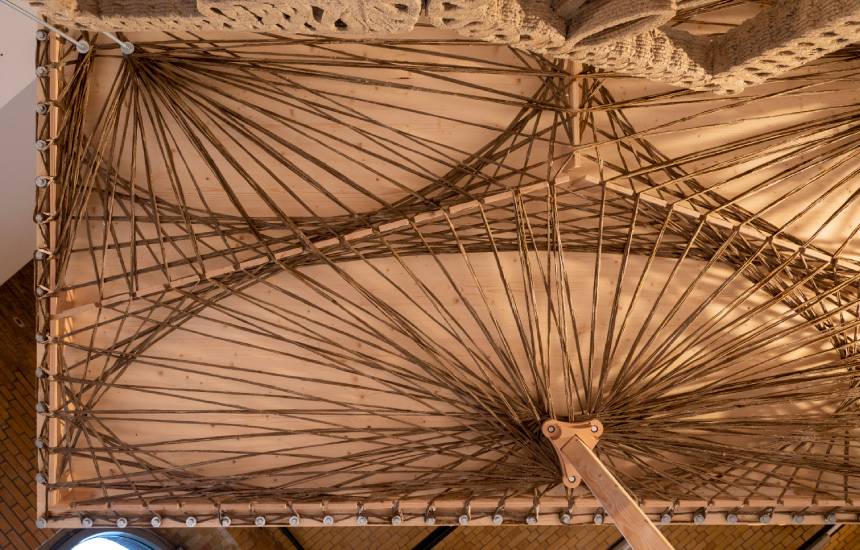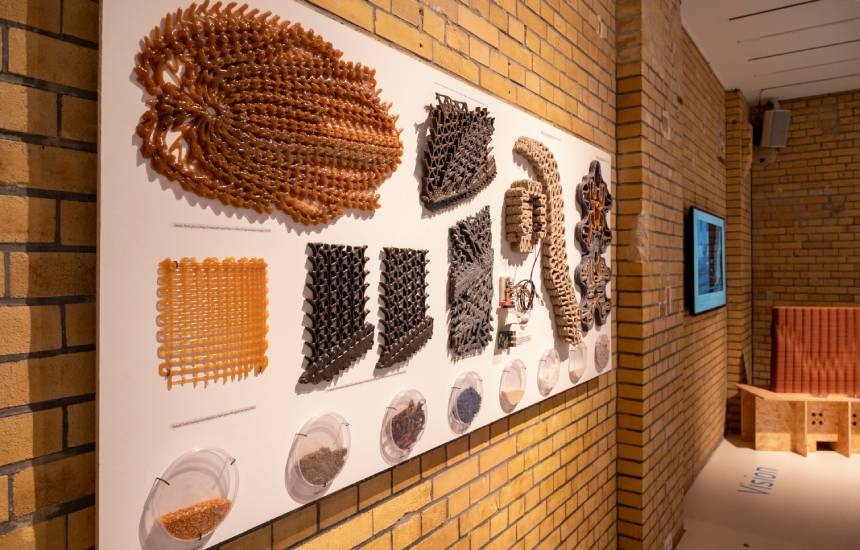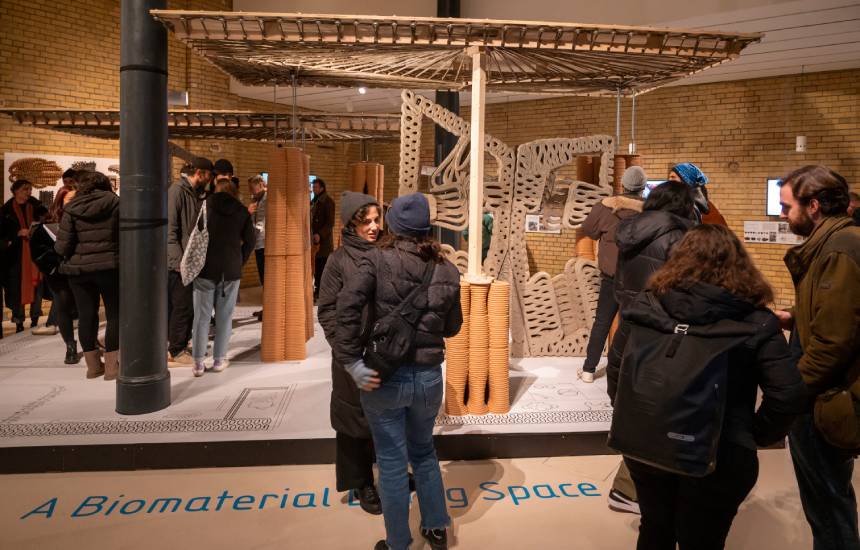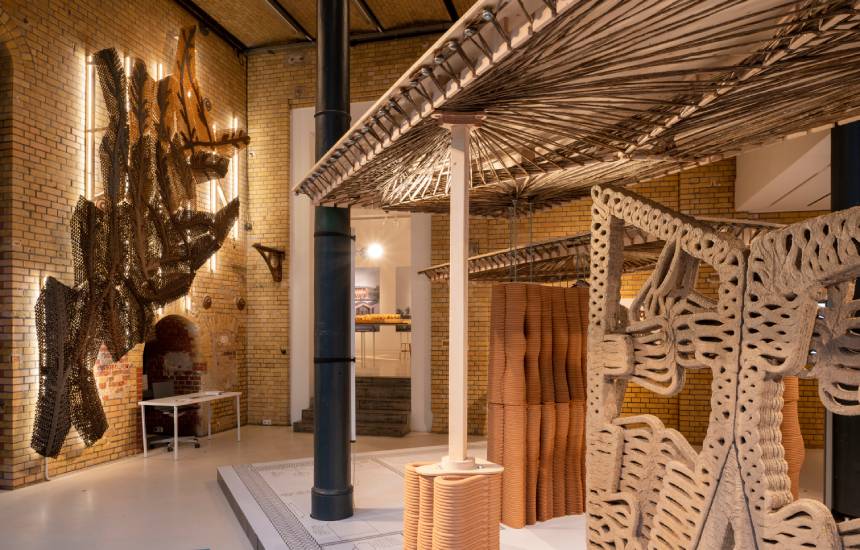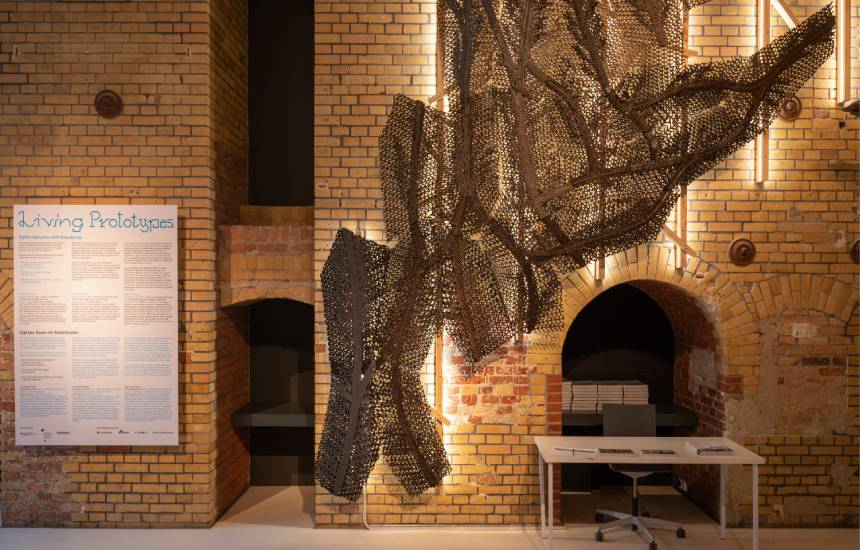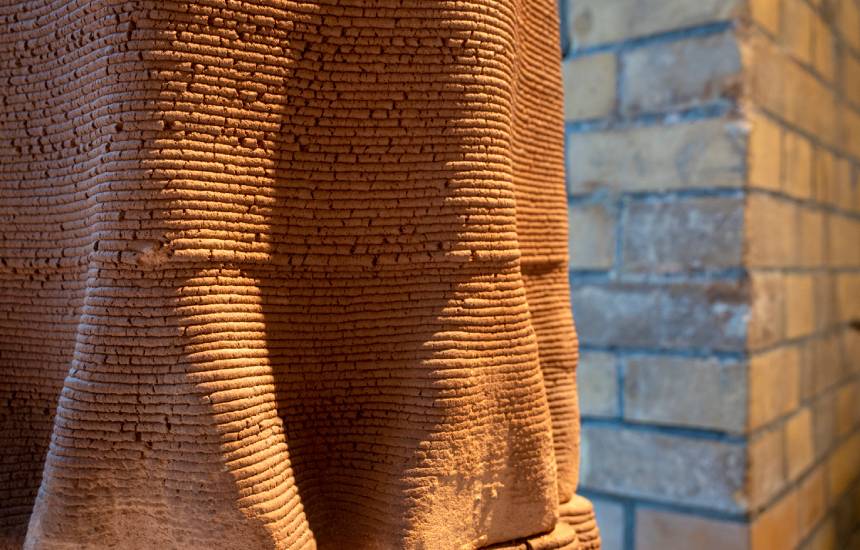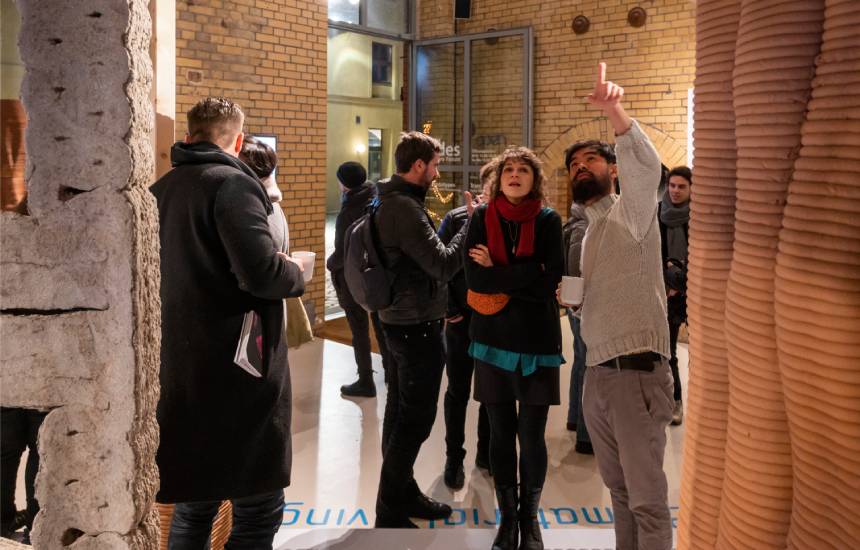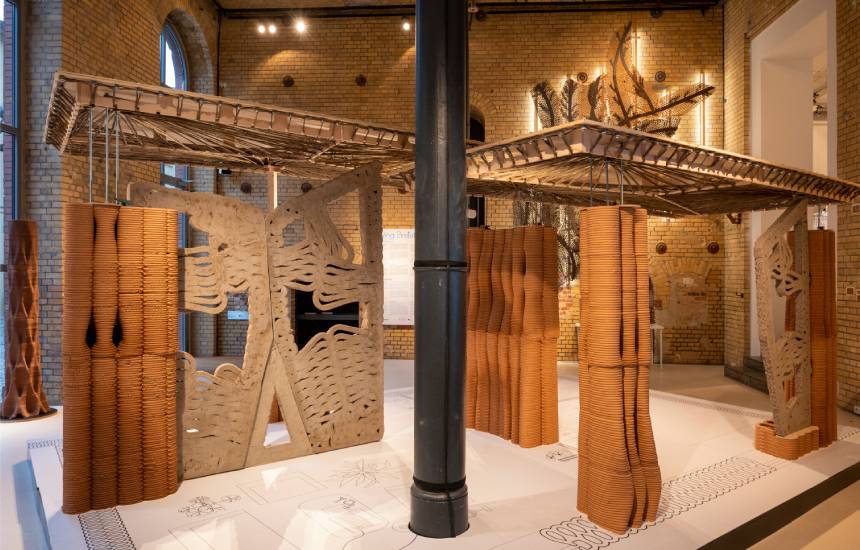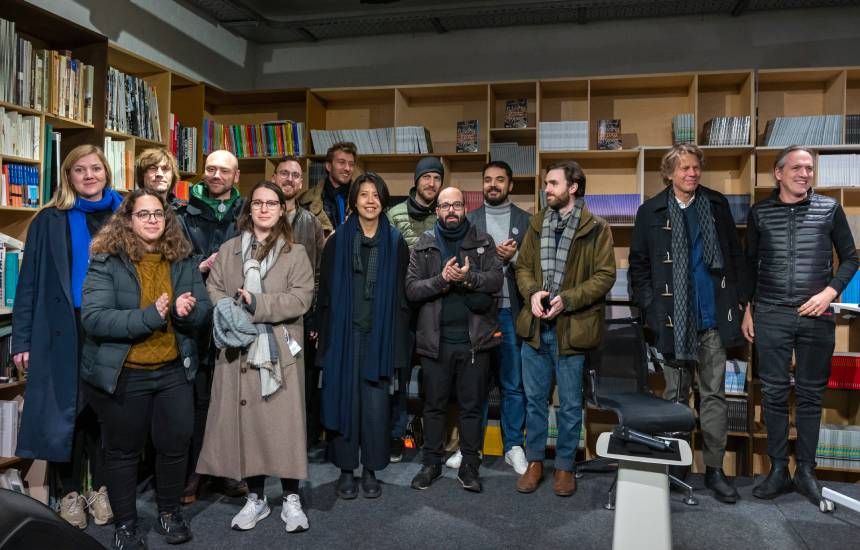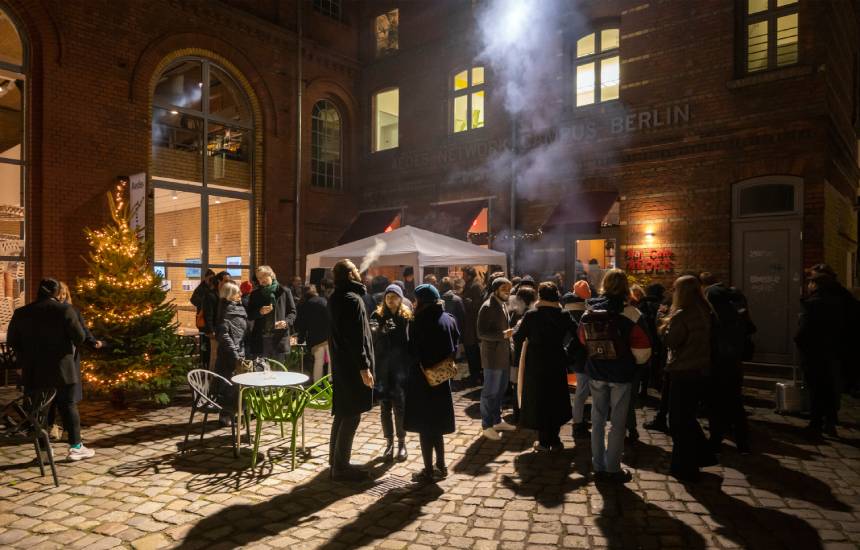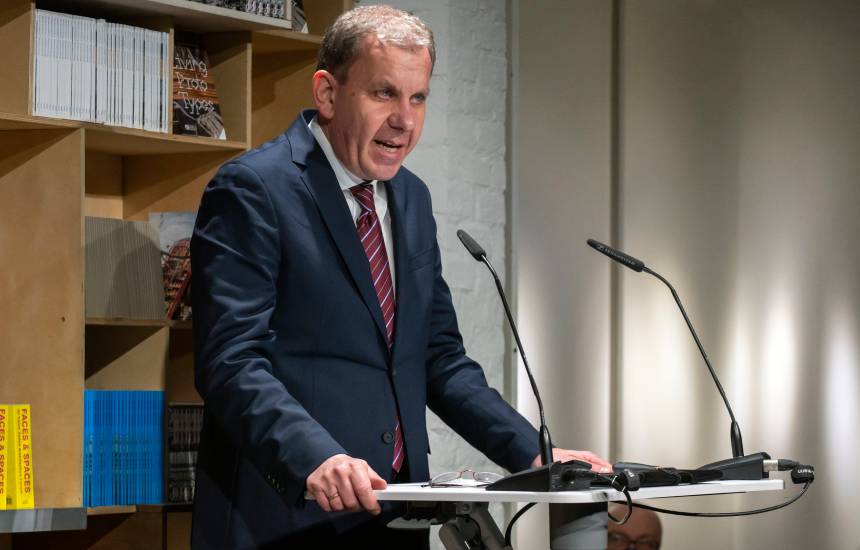The exhibition presents an exceptional research project on digital fabrication in building with bio-based materials. Full-scale prototypes make this exciting field in architecture understandable and ‘touchable’, while also demonstrating a living space designed by merging the innovative approaches of three research teams. The digitally fabricated prototypes for building components, made with the bio-based materials earth, flax fibre and bioplastics, were developed in a European research project, instigated and guided by ANCB The Aedes Metropolitan Laboratory and funded by the Zukunft Bau programme of the German Ministry for Housing, Urban Development and Building. Over the course of 18 months, three university institutes – CITA from the Royal Danish Academy in Copenhagen, ITKE from the University of Stuttgart and IAAC, the Institute for Advanced Architecture of Catalonia in Barcelona – collaborated with industry partners COBOD from Copenhagen, FibR from Kernen and WASP from Massa Lombarda.
What might our homes look and feel like if they were built without using fossil fuels? What if advanced research into bio-based building materials could change architectural design and building construction? How can architectural prototypes communicate knowledge about resource-conscious design and construction processes? These questions are at the core of the Living Prototypes exhibition.
Central to Living Prototypes is the task of translating abstract laboratory explorations into something physically tangible and recognisable, that enables us – the public – as well as the building industry and policy-makers to imagine the kinds of spaces and architecture that new bio-based materials with digital construction techniques make possible. ANCB provides the project with a physical and intellectual space of possibility, that supports collaboration and experimentation on research approaches and new materials towards sustainable building. In essence, Living Prototypes is about triggering the political pressure to innovate the way we build (in) the future.
Today, the urgent need to reduce our anthropogenic footprints of carbon dioxide emissions, resource consumption and waste production is undisputable. Considering that today around 40% of the total CO2 emissions in Germany stem from the construction, use or dismantling of buildings, it is clear that there is still a long way to go before the objective already established by law is met: a climate-neutral building stock by 2045.
In 2017, ANCB launched the discussion series Craftsmanship in the Digital Age also in collaboration with the Zukunft Bau programme. This explored the potential of digital technologies to trigger innovative responses to the design and making of architecture; especially regarding energy and resource sustainability. With the Living Prototypes project, a follow-up step is taken from a theoretical discourse to an experiment that the audience can see, touch and discuss. Research provides many promising proposals, but there is always a risk that the results remain in the ivory tower or disappear into the drawer. To avoid this, it is essential to build a bridge between scientific results, their translation into practical applications and their communication to a broad audience. Therefore, one aim of the Living Prototypes project is to provide such a bridging space: here ideas merge to solve a common task: the design and making of a full-scale prototype that demonstrates the potential of natural and bio-based recycled materials in combination with the latest techniques in digital fabrication.
The research teams
The three research teams – the Royal Danish Academy with COBOD, the University of Stuttgart with FibR, and the Institute for Advanced Architecture of Catalonia with WASP – took up this challenge and combined their different research approaches and perspectives for the first time. In a way, their collaboration is a prototype in and of itself: a continuous chain of interlocking processes from digital design to digital manufacturing, connecting the knowledge of these experts throughout Europe.
The result is a visionary suggestion of what resource-conscious building and living could look and feel like in the near future. As three physical prototypes interconnected to form a living space, they can be experienced and discussed. Together, they demonstrate the current state of applied scientific knowledge and experimental practice. They do not stand for a finished proposal, but rather illustrate new concepts and make it possible to examine their suitability and acceptability for wider practice.
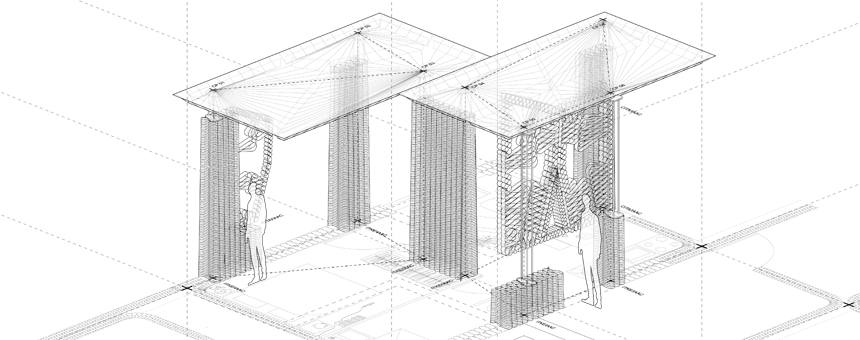
A Biomaterial Living Space_drawing of exhibition installation © IAAC_CITA_ITKE
The exhibition and the symposium
In the exhibition, three separate prototypes made of earth, flax fibre and bioplastic, are brought together in a 1:1 scale installation built around a typical floorplan of a 1-bedroom apartment. Contextual and supporting information include visualisations of the architecture possible with these biomaterials and digital fabrication methods, and a selection of sample raw materials, test models and scaled prototypes from further explorations by each research team. Video and photographic material show the development of the biomaterials and building prototypes over the course of the Living Prototypes project.
The accompanying symposium on the afternoon of the exhibition opening focuses on what designing with biomaterials and digital fabrication might mean for architectural thinking and design. Following short presentations by each of the three teams, keynote speaker Prof. Ingrid Halland from the Oslo School of Architecture reflects theoretically on the Living Prototypes, and together with BBSR representative Arnd Rose, engages the research teams in an in-depth conversation on this way of building.
The research teams and their projects
3D-PRINTED EARTH
University partner: IAAC – Institute for Advanced Architecture of Catalonia, Barcelona
Industry partner: WASP, Massa Lombarda
Earth is a traditional and inexpensive building material, for which extensive knowledge exists. IAAC and WASP employ 3D printing and computational design to improve the structural and climate-regulation performance of earth constructions. This also enables a new flexibility in the architecture achievable with this biomaterial, advances its aesthetic capacity, and makes the construction process more efficient and feasible for infill and other forms of built environment densification.
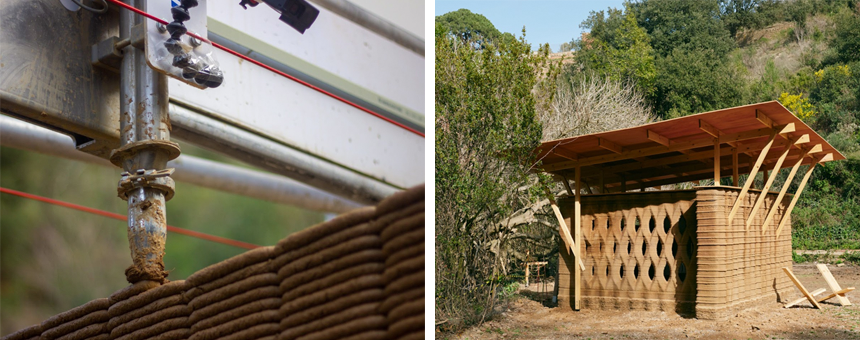
3D-printing of earth prototype | 3D-printed earth housing prototype © IAAC
FLAX FIBRE-WINDING
University partner: ITKE – Institute of Building Structures and Structural Design, University of Stuttgart
Industry partner: FibR GmbH, Kernen
Robotic coreless fibre winding aims to optimise material efficiency in architectural components by avoiding formwork and material cutoffs. Material use corresponds to structural demands. ITKE and FibR investigated robotic coreless fibre winding using natural flax fibres. Through the inter-material dialogue with other living prototypes at the Aedes exhibition, the project communicates the relevance of such material systems in future living spaces.
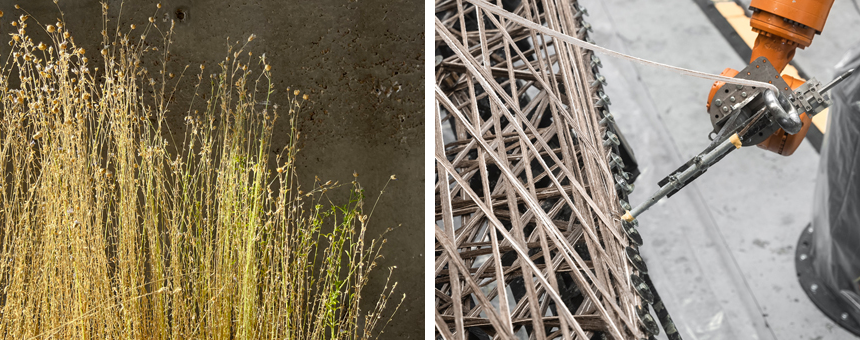
Raw material for flax fibres | Robotic winding of flax fibre prototype © ITKE-ICD
BIOPLASTIC PRINTS
University partner: CITA – Centre for Information Technology and Architecture, Royal Danish Academy, Copenhagen
Industry partner: COBOD International A/S, Copenhagen
Bioplastics are renewable, inexpensive, biodegradable and chemically diverse. Digital data analysis technologies, such as machine learning, make it possible to predict and control the behaviour of these complex materials during and after the printing process. CITA and COBOD prototype components for interior spaces using two complementary bio-based materials (cellulose and bone glue). These suggest future circular material life cycles in buildings that are made possible by this adaptive manufacturing process.
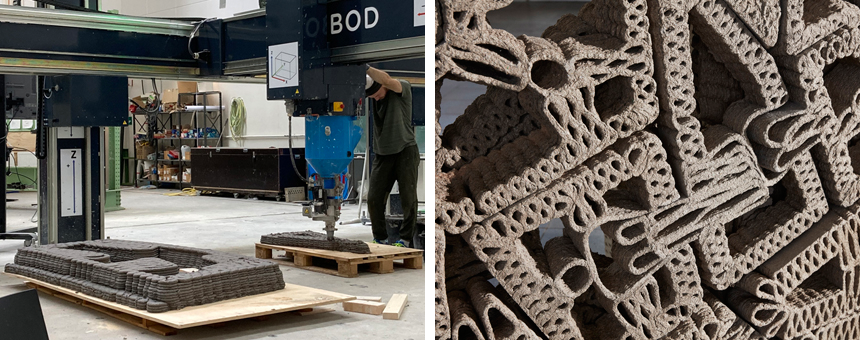
3D-printing of the cellulose prototype at COBOD | 3D-printed cellulose panels interlocked as screen © CITA
Funded by
the Federal Institute for Research on Building, Urban Affairs and Spatial Development (BBSR) on behalf of the German Ministry for Housing, Urban Development and Building with funds from the research innovation programme Zukunft Bau
CATALOGUE
An ANCB project publication will be available on the day of the opening.
English, 10€
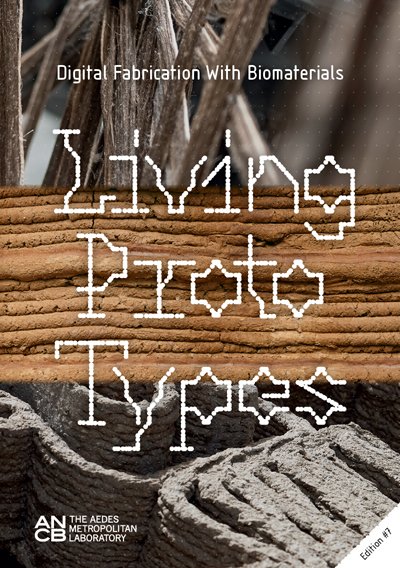
In cooperation with


